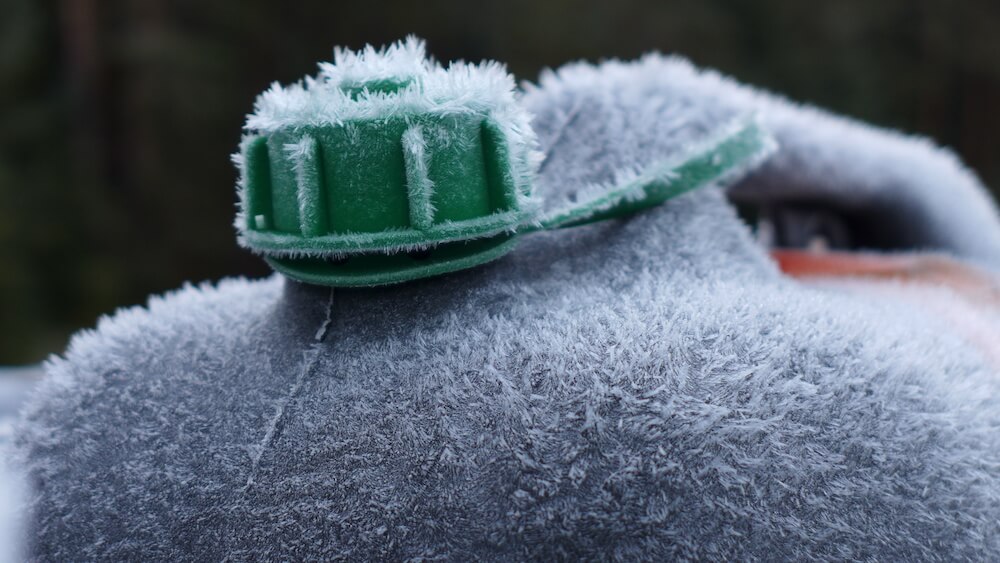It’s November, which means winter is just around the corner. While winter means staying huddled up indoors for some people, others like to brave the cold and enjoy the great outdoors. Winter camping can be an extremely rewarding experience. Just imagine yourself trekking through the quiet trails and campsites surrounded by a world of pure white snow and ice. There are no bugs or bears to worry about, just you and the peace of winter wilderness. In this blog, we’ll be discussing everything you need to know to make sure your winter camping trip goes just as planned. Keep reading for your very own winter camping guide!
Clothing Tips
Your outwear for winter camping will comprise of three layers to ensure your sweat properly evaporates while you still stay toasty against cold wind, rain, and snow:
- Base-layer: This layer moves sweat from your body to evaporate on the outer layers. As sweat evaporates from the skin, it takes away body heat. This process cools the body down, which puts you at risk of hypothermia. That’s why the other two layers are essential. The ideal materials for the base layer are merino wool or high-wicking polyester.
- Mid-layer: This layer is essential for keeping your body heat from escaping. The greater the insulation, the more heat is trapped and the more warmth you retain. The ideal materials for this layer are down, synthetic insulation, and heavy-weight fleece.
- Out-layer: This layer is what protects you from the elements like wind, rain, and snow. The outer layer must be waterproof and breathable to allow moisture to escape from your base and mid-layers. The best winter shells are made with a three-layer construction with an outermost layer with a DWR coating.
Along with having the right coats and jackets for winter camping, you’ll also want to ensure you have the proper accessories. Choose a thick, warm hat, mittens, and always bring extras of each for the trails. Make sure your boots are warm, waterproof, durable, and fit well. Lastly, always wear sunscreen and sunglasses, even though it’s winter. The reflective snow can cook you, especially if you’re out in late February. Protect your exposed skin and body parts just as you would if you were headed to the beach.
Camping Equipment
When choosing the right backpack, remember that winter camping backpacks are typically larger to carry bulkier layers and extra gear with you. Just like any season of camping, you’ll want to pack as lightly as possible while still being prepared for just about anything. If you plan on carrying skies or snowshoes, your pack will need to have a lash point or another way to secure those items.
If you are camping below the tree line and you’re not anticipating stormy weather, a three-season backpacking tent will work just fine. However, we recommend a four-season tent if you are expecting heavy snow, high winds, and cooler temperatures. These tents have less mesh, and the rainflies extend close to the ground to keep swirling snow from getting inside. The trick with tent sizing is choosing one size bigger than how many people will be sleeping in it. So, if one person is sleeping in a tent, they’ll want to purchase a two-person sized tent. The extra space will give you a place to stow your gear, so it doesn’t have to sit out in the elements.
Your sleeping bag is almost just as important as your tent. Use a bag that’s rated for at least 10˚F lower than the coldest temperature you are expecting to experience. You can always vent your bag if you get too warm. Cold weather sleeping bags are typically stuffed with goose-down or synthetic insulation. Down is a popular choice because it’s extremely warm and light, but it can’t get wet. When it gets wet, goose down loses much of its insulating ability. If you don’t think your bag is warm enough, you can always add a sleeping bag liner. These can add about 5˚F to 25˚F of warmth while minimizing wear and keeping your bag cleaner.
Every camper will tell you not to forget your sleeping pad. For winter, you’ll want to use two. This will help you from losing body heat to the snowy surface beneath you as you sleep. Use a closed-cell foam pad next to the ground and a self-inflating pad on top to get the best insulation from the ground. When picking the right sleeping pad, always consider the R-value. The R-value is the measurement of insulation, and it ranges from 1.0 to 8.0. The higher the R-value, the better it insulates. You usually can’t go wrong with all-season pads for winter, but make sure always to pick a pad with an R-value of at least 4.0 for winter camping.
Food & Drink Tips
It’s essential to take short lunch breaks when camping and hiking in the winter. If you stop for too long, you’ll cool down, which is the last thing you want. Shorter lunch breaks mean you will need to pack calorie-dense foods that are easy to eat. Focus on foods that will give you protein, fats, and carbohydrates.
Don’t forget to stay hydrated by sipping water regularly throughout the day. At camp, make hot drinks, or sip on soup if you can. These are two great ways to get warm and rehydrate. To ensure that you have enough drinking water, odds are you will have to melt snow. You’ll want to do this every night, so your water is ready to go in the morning.
To melt your snow, you’ll need a stove. We recommend you use a liquid-fuel stove. These run on white gas, which burns hot and clean and works well in below-freezing temperatures. While they are heavier and take more time to boil than canister stoves, canister stoves do not work well in cold weather. Some other multi-fuel stoves can run on unleaded auto gasoline, jet fuel, diesel, and/or kerosene, making them an excellent choice for international travel. And one last tip, always bring extra fuel! You never know how much you’ll need. It’s better to be over-prepared than to find yourself without a stove in the dead of winter.
Shop EZ-POUR® Today!
EZ-POUR® spouts and accessories are here when you need them. Order a spout kit today to ensure you have everything you need for your next camping trip. Whether you are filling up your vehicle or need a safe way to store your fuel for your portable stove, EZ-POUR® has you covered. You don’t want to catch yourself unprepared this winter; shop with EZ-POUR® and check at least one thing off your list.

